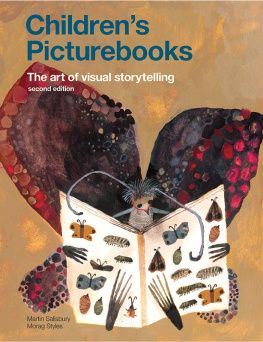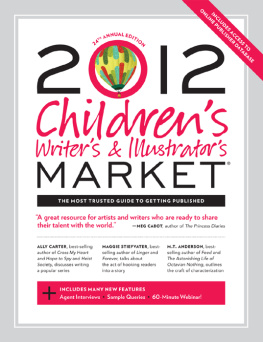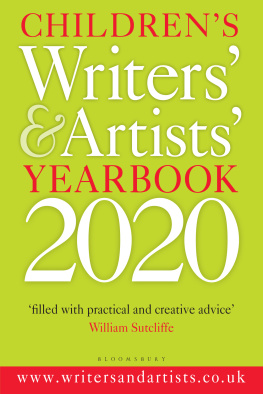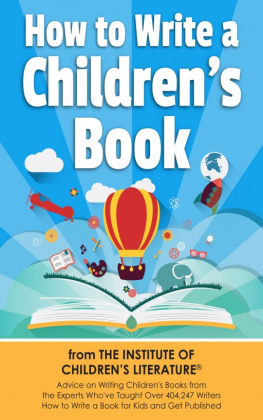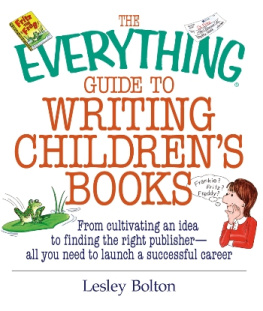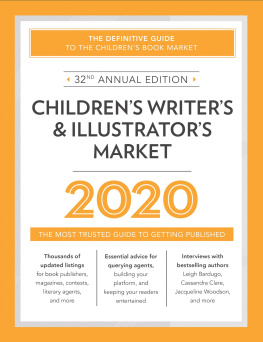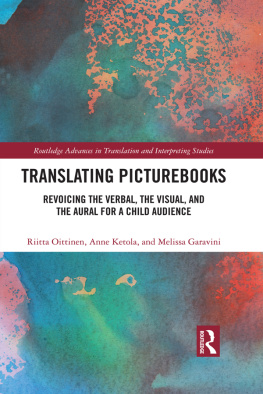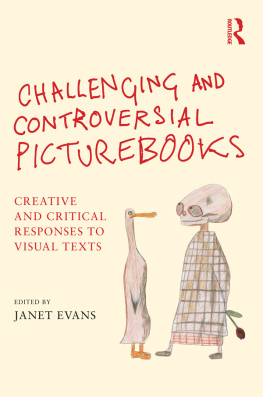Childrens Picturebooks
second edition

Published by
Laurence King Publishing Ltd
361373 City Road
London EC1V 1LR
United Kingdom
email:
www.laurenceking.com
First published in 2012. This edition published in 2020.
Design 2019 Laurence King Publishing Ltd
Text 2019 Martin Salisbury and Morag Styles
Martin Salisbury and Morag Styles have asserted their right under the Copyright, Designs, and Patent Act 1988, to be identified as the Authors of this Work.
All Rights Reserved. No part of this publication may be reproduced or transmitted in any form or by any means, electronic or mechanical, including photocopy, recording or any information storage and retrieval system without prior permission in writing from the publisher.
A catalogue record for this book is available from the British Library
ISBN 978 1 78627 573 8
Design: Mariana Sameiro
Cover art: Beatrice Alemagna
Picture research: Cheryl Thomas
Book photography: Ida Riveros
Printed in China

Laurence King Publishing is committed to ethical and sustainable production. We are proud participants in The Book Chain Project bookchainproject.com
Childrens Picturebooks
The art of visual storytelling
second edition
Martin Salisbury with Morag Styles
Laurence King Publishing
Contents
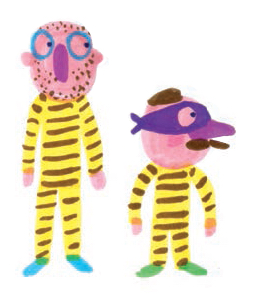
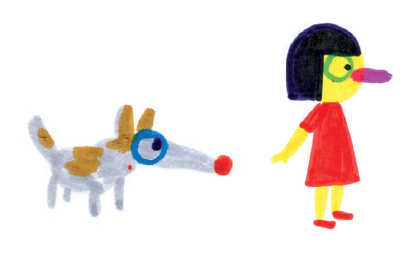
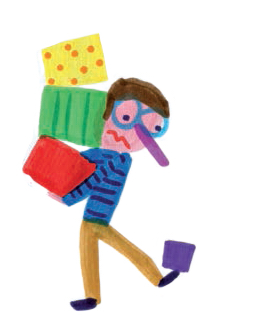
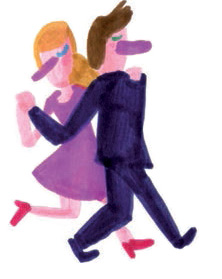
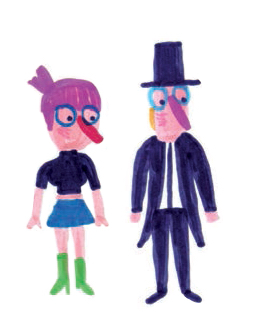
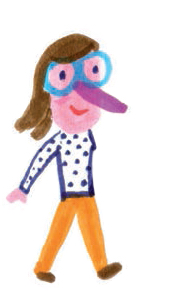
Introduction
Since the publication of the first edition of Childrens Picturebooks: The Art of Visual Storytelling in 2012, and over the period of its four subsequent reprintings, the childrens picturebook has continued to evolve and grow as an art form. During that time, we have seen much change in the childrens publishing industry.
The picturebook app, seen at the time as such a threat to its ink-on-paper predecessor, has all but slipped away, having served its purpose of breathing new life into the traditional book. Printed books have needed to become more physical and more beautiful as objects in order to compete with the screens that have become so pervasive in our lives.
The production quality of picturebooks has soared. Many now feature embossing, debossing, spot lamination and printing on quality paper stocks with luminous additional spot colours, fulfilling our need for the all-round haptic, tactile and aesthetic experience of the book. Often these developments have been led by the small independent publishers that have proliferated over the last decade, reinvigorating the industry and forcing the larger conglomerates to follow suit. Many of the latter have set up their own imprints with independent-sounding names and a mission to publish artistically sophisticated books.
Ten years ago, the big picturebook was a rarity, with booksellers struggling to find room to display larger-scale hardback books. Thanks to the pioneering and successful Maps by Aleksandra Mizieliska and Daniel Mizieliski (Big Picture Press, 2013), we are now awash with big non-fiction books, proudly and prominently accommodated and displayed.
In Germany, the big picturebook, or Wimmelbuch, is undergoing a revival of fortunes, and books exploring the historic achievements of female role models in science and the arts have flourished. Happily for picturebook-makers, illustrators, publishers and, most importantly, children, all of this suggests that we are currently enjoying a new golden age of childrens picturebooks. And, with the growth of interest in picturebook-making in China, we can expect the pace of change to accelerate, as new approaches and less familiar graphic traditions exert their influence. Alongside all of this, academic interest in picturebooks continues to grow, with international publications and conferences on both picturebook applied research and new theory from the childrens literature field becoming increasingly established.
The traditional role of illustration as subordinate to the written word one that Wikipedia describes as decoration, interpretation or visual explanation of a text, concept or process is totally inadequate in describing the role of the visual in picturebook-making. Here, words and pictures combine in varying ratios to deliver the overall meaning, complementing, teasing and often contradicting each other. Whereas in the illustrated book the images enhance and augment the text but are not essential to its understanding, in the picturebook neither words nor images alone would make sense if experienced without the other. This relationship between word and image has been variously described by artists and academics as antiphonal interweaving (Ahlberg); like a composer thinking music when reading poetry (Sendak); counterpoint (Pullman, Nikolajeva and Scott), and interanimation (Meek), all of them attempting to capture the magic and complexity of this ever-evolving form. The language that we use to describe the outcomes has struggled to keep up as makers playfully explore and test the boundaries between the picturebook, the graphic novel, the illustrated book and the artists book.
In revisiting this book for a revised and updated edition, we once again draw on our respective backgrounds and perspectives to try to bring a little closer together the worlds of creative practice in art and design, academic research, the primary classroom and the child alone with the book (or, for those lucky enough, with a caring older other). In the following chapters, we explore not only the history and evolution of the picturebook, but all aspects of the art of picturebook-making, from education and training to the interplay of word and image on the page; from the use of old and new media and print processes to the editors input and the demands of the publishing industry in the twenty-first century. We draw on the work of scholars in the field, such as Barbara Bader, Perry Nodelman and, in particular, the research of Evelyn Arizpe and Morag Styles. New case studies of students, recent graduates and industry professionals from around the world have been prepared from extensive interviews and portfolio scrutiny. These case studies look in more detail at the topics raised in each chapter and are designed to reflect recent and current developments in the field, providing valuable information and inspiration for illustration students with a particular interest in the picturebook.
Childrens Picturebooks won the UK Literacy Association Academic Book Award in 2013, a welcome sign that the role of the visual content of picturebooks is being increasingly acknowledged by the educational, literary and academic communities. This new edition examines and celebrates an increasingly recognized and valued international art form that is rapidly becoming one of the most exciting and innovative fields of visual endeavour in the graphic arts.
Next page
